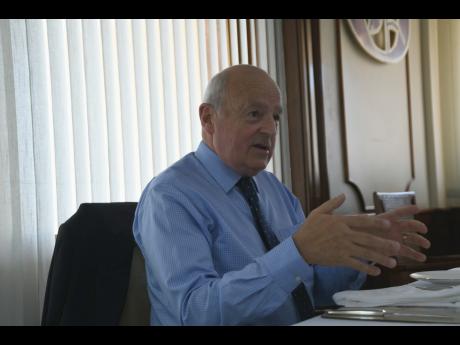Gleaner Editors’ Forum | Cardiff Model to fight crime - British professor says hospital data collection initiative very effective in identifying hotspots
A British professor who developed a model that uses hospital data to help prevent violent crimes is trying to convince Jamaican authorities and other stakeholder groups to embrace the initiative.
The Cardiff Model was developed by Jonathan Shepherd, professor at the University of Cardiff in Wales, United Kingdom (UK), and is used to identify crime hotspots through information collected at local hospitals from victims of violent crimes.
The three-step system involves the collection of non-personal information from victims who show up at emergency rooms, detailed analysis of the data alongside information available to the police, and the creation of a multi-sector body - a violence-prevention board that uses the data to drive policing strategies.
"In our first study - this is in the UK and the city of Bristol - it was revealed that only a quarter of the violence which resulted in emergency treatment was known to the police," said Shepherd, who was addressing a Gleaner Editors' Forum at the newspaper's downtown Kingston offices yesterday.
He said that the result was the same for similar studies conducted in Wales and other countries, such as Denmark, but climbed to 49 per cent in the United States.
Dr Elizabeth Ward, chairman of the Violence Prevention Alliance, said a study conducted by the health ministry has revealed that Jamaican hospitals record approximately 25,000 violence-related incidents every year, but only between 8,000 and 10,000 are reported to the police.
"It's quite obvious that there are hotspots for violence which are only identifiable from information from emergency departments," Shepherd said.
"So, immediately, it became obvious that hospital emergency departments are a potential source of a great deal of unique information about violence. Precisely, where it is happening - which street, which club, which park, or which school."
He said the hospital data also turned out to be a "unique" source of information about the perpetrators and the types of weapons involved.
"Which weapon was it? Was it a knife, was it a gun, was it a bottle, was it a glass, was it just blunt trauma?" he questioned.
'WE JUST COUNT THE NUMBERS'
Shepherd said that this information, when analysed and shared with law-enforcement authorities and other stakeholder groups that comprise the violence prevention boards, can help to drive down criminal activities in specific areas.
"They will hear from the analyst a report on where the violence happened last month or in the last quarter and decide what action is necessary. So it could be changing the routes of police patrols, it could be closing down this alcohol outlet or limiting the hours, it could be cutting down the shrubbery in a park, putting up CCTV cameras, things like that," he said.
Ward, in embracing the Cardiff Model, noted that it is mandatory for emergency room employees in Jamaica to notify the police about gunshot injuries but pointed out that this does not take into account stabbings, lacerations, and blunt injuries or the areas in which they occur.
"A lot of the stabbings and lacerations, they are often the predecessors of much more important incidents. You know Jamaica, we are locked into retaliation - 'A going to get the guy that did this to me' - so the fight escalates, and then they bring in the bigger guys, sometimes with bigger guns," she reasoned.
"We just count the numbers, but we are not necessarily using the information for prevention, for identifying patterns, for identifying specific areas where certain types of incidents are occurring."

